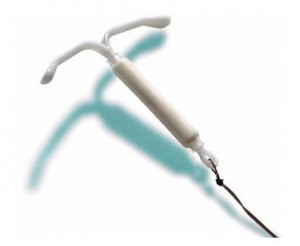FREE NATIONWIDE CASE EVALUATIONS: CALL 1-800-632-1404
Our team of attorneys are now investigating claims and prepared to file Mirena lawsuits involving the intrauterine contraceptive device Mirena®. Manufactured by Bayer Healthcare Pharmaceuticals, Inc., Mirena is an IUD device [intrauterine device] that must be inserted by a trained health care provider and is intended to provide contraceptive protection for up to five years. Some women have experienced serious adverse side-effects and potentially life-threatening complications following the implantation of the Mirena device, including perforation of or imbedment in the uterus.
About Mirena Injuries
The concept of intrauterine device or IUD has been around for many years. However the modern IUD became available in the 1960s when copper wire was added to the device which allowed it to be made much smaller than before.
Mirena is one of the newest IUDs in the market. The Mirena device is a progestin containing intrauterine device that delivers levonorgestrel topically to the endometrium. The effect of the device lasts for at least five years. It can be easily removed. The FDA announced its approval in December 2000 and its sponsor, Berlex Company (the American subsidiary ofSchering,Berlin) began marketing in theUnited Statesin 2001 after successfully launching the contraceptive product inEurope. The intrauterine device is a small plastic device that is inserted in the uterine cavity by a physician. It prevents pregnancy by not allowing a fertilized egg to implant itself in the uterine lining and can remain in place for several years if no difficulties arise. Exactly how this happens is not known, although it is believed that the IUD acts as a foreign body, stimulating an inflammatory reaction in the endometrium. While this reaction creates no discomfort to the user, it creates an environment unfavorable to the implantation of the fertilized ovum. Despite its excellent contraceptive effectiveness rating, the IUD has posed a number of health problems to many users.
Mirena Side Effects
Some women may have progestin side effects after using Mirena. Some women have irregular light spotting for up to three months after the insertion. Another serious side effect that has been associated with the use of Mirena is Abscesses. Abscesses are slow to heal and may cause chronic pain. The most common pelvic abscesses are called TOAs (tubo-ovarian abscesses), but abscesses may occur in other sites as well. Abscesses inflict widespread damage to important tissues; because they tend to recur, they are regarded as chronic conditions. These, too, are treated with antibiotics, but the response is less certain. Like sinus infections, chronic tubal infections are difficult to eradicate. Recurrences need prolonged antibiotic treatment, sometimes surgery for draining abscesses, and often cause such misery that hysterectomy may be considered an acceptable alternative, simultaneously excising the tubes.
An abscess is a cavity filled with pus and lined with inflamed tissues. Abscesses form where there is equilibrium between the invading bacteria and the resisting host. Several days after the infection, an abscess near the surface of the skin will become hot, red, tender swelling. If it is deep inside the body, the abscess cannot be seen or felt and the patient will feel ill and run a high temperature for no apparent reason.
FOR A FREE MIRENA LAWSUIT CASE EVALUATION:
CALL TOLL FREE: (800) 632-1404
EMAIL: clicking here.
FILL OUT THIS FORM FOR FREE HELP:
NOTE: Our team of attorneys will review potential cases for all fifty states, including Alabama Alaska Arizona Arkansas California Colorado Connecticut Delaware Florida Georgia Hawaii Idaho Illinois Indiana Iowa Kansas Kentucky Louisiana Maine Maryland Massachusetts Michigan Minnesota Mississippi Missouri Montana Nebraska Nevada New Hampshire New Jersey New Mexico New York North Carolina North Dakota Ohio Oklahoma Oregon Pennsylvania Rhode Island South Carolina South Dakota Tennessee Texas Utah Vermont Virginia Washington West Virginia Wisconsin and Wyoming.
